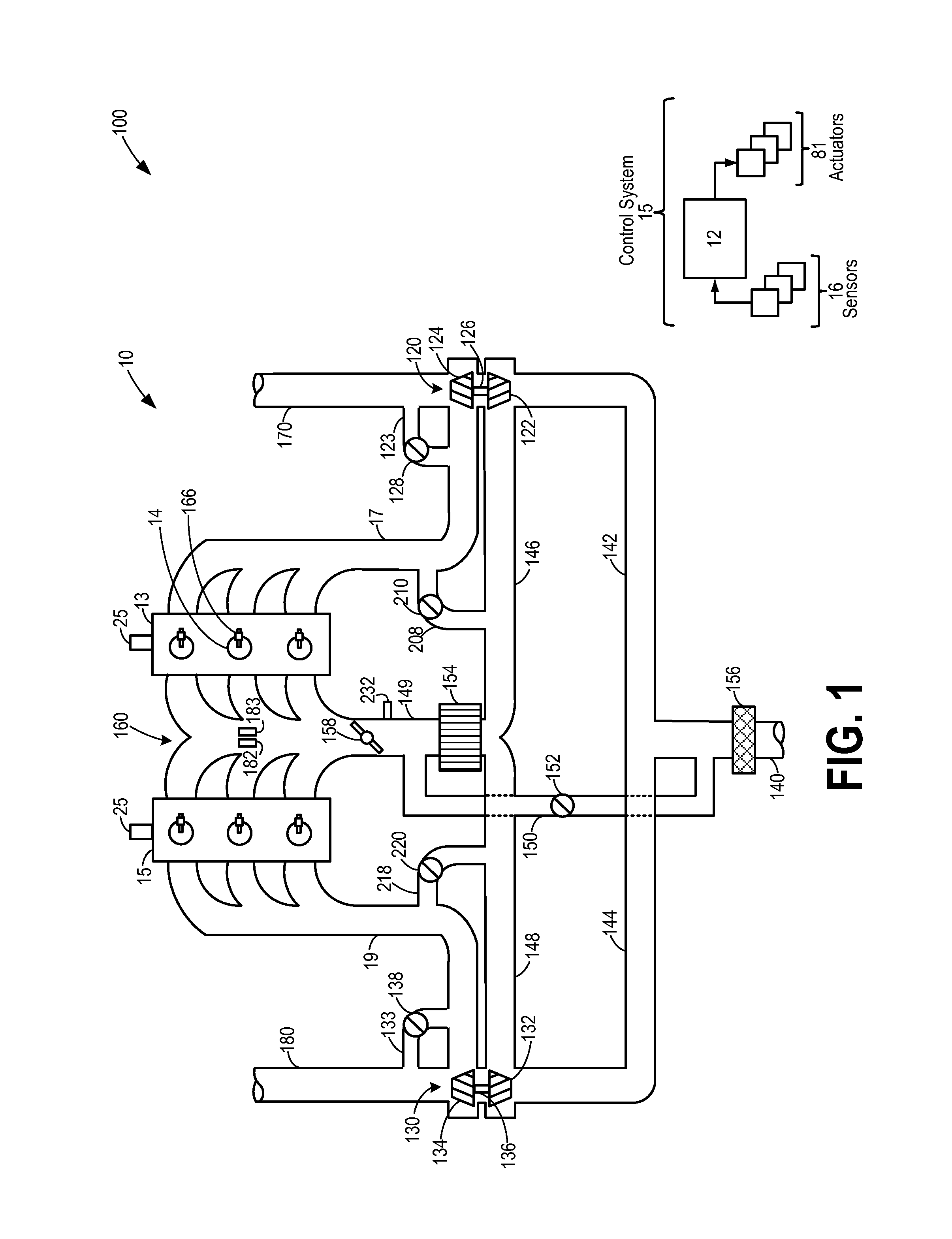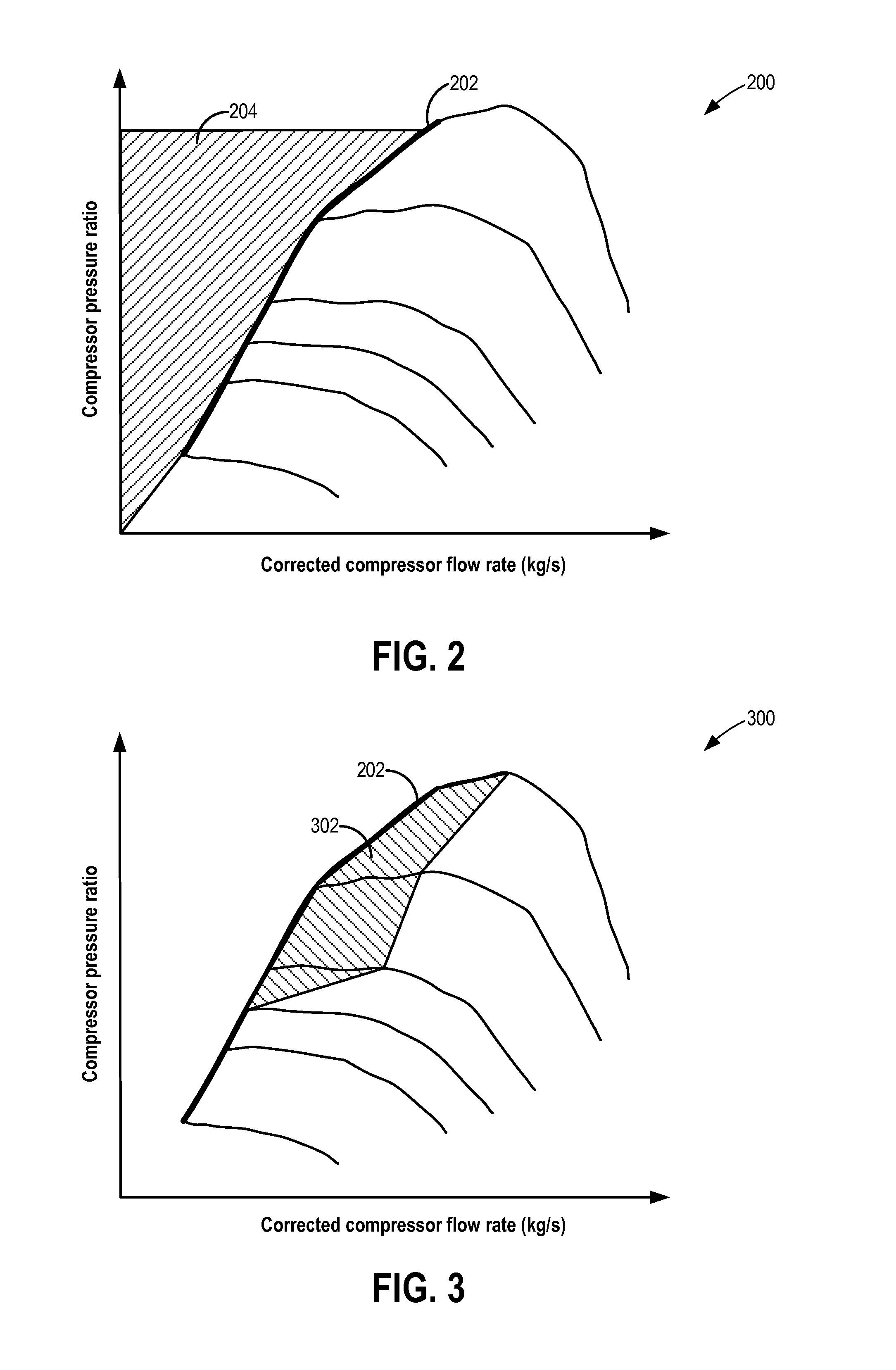Methods and systems for boost control
a boost control and boost technology, applied in the direction of electric control, machines/engines, mechanical equipment, etc., can solve the problems of increased engine pumping work, confusion of wastegate control loop, and increased exhaust pressure, so as to improve the peak power output
- Summary
- Abstract
- Description
- Claims
- Application Information
AI Technical Summary
Benefits of technology
Problems solved by technology
Method used
Image
Examples
Embodiment Construction
[0014]The following description relates to systems and methods for improving boost pressure control in a boosted engine system, such as the system of FIG. 1. Wastegate and compressor recirculation valve adjustments (FIG. 4) may be concurrently used to operate a turbocharger within surge limits (FIGS. 2-3). A controller may be configured to perform a control routine, such as the routine of FIG. 5, to perform feed-forward and feedback adjustments to the position of a wastegate and a compressor recirculation valve to accurately provide a boosted pressure and meet a boosted torque demand. The controller may also adjust the position of an intake throttle to compensate for air flow errors resulting from the wastegate and / or recirculation valve adjustments. The controller may also adjust a gain function of the wastegate based on the functionality of the compressor recirculation valve to further improve boost delivery time and precision. An example adjustment is shown with reference to FIG....
PUM
 Login to View More
Login to View More Abstract
Description
Claims
Application Information
 Login to View More
Login to View More - R&D
- Intellectual Property
- Life Sciences
- Materials
- Tech Scout
- Unparalleled Data Quality
- Higher Quality Content
- 60% Fewer Hallucinations
Browse by: Latest US Patents, China's latest patents, Technical Efficacy Thesaurus, Application Domain, Technology Topic, Popular Technical Reports.
© 2025 PatSnap. All rights reserved.Legal|Privacy policy|Modern Slavery Act Transparency Statement|Sitemap|About US| Contact US: help@patsnap.com



